Inspired by Skye
Woven by pedal power
Cathy Koos
(unless otherwise noted, all photos courtesy of Skye Weavers)
I recently had the opportunity to chat with Andrea and Roger, proprietors of Skye Weavers, located on the Hebridean Isle of Skye, a magical place of mist and heather. While I usually like to use Zoom for my interviews, rural internet on Skye precluded, so we chatted via email.
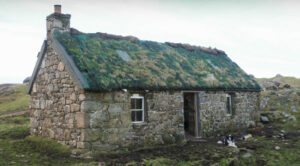
Cathy: Bicycle Pedal-powered loom. Is this a common style of loom for production weaving? I know you purchased a new pedal-powered loom in 2016 from Griffith Textile Machines, but on the older loom, besides the pedal mechanism, what other parts of the loom are repurposed from other machinery?
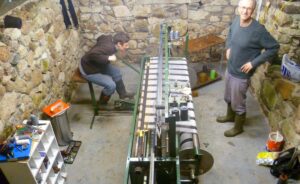
Andrea and Roger: We bought our first loom (second-hand) in 2011 from a weaver on the Isle of Lewis. He’d used it to weave Harris Tweed but was giving up weaving to become a mechanic. We wanted to weave blankets and scarves as well as tweed so adapted the loom slightly, for instance by adding leno chains – small chains that we thread up with sewing cotton to create lockstitch down the edge of a scarf. Harris Tweed weavers are not allowed to use a motor to do their weaving, which is why the loom is pedal-powered.
While we didn’t make major changes to the loom, we did build our warping wheel and original creel from scratch using repurposed machinery – and with lots of support from our mentor Bob.
CK: Repurposing grass rake wheels. This is such an innovative re-use of the wheels and old floorboards! Do you search out possible machine parts?
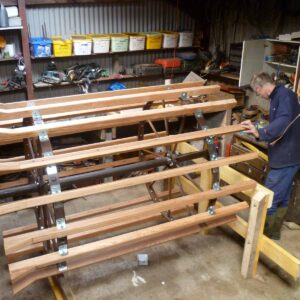
A and R: We love recycling from an environmental point of view, but it was also a case of ‘needs must’ in the early days. There’s usually no shortage of disused farm equipment in our rural area so it was just a matter of asking around for something suitable and improvising! Roger likes nothing better than a technical challenge with old bits of machinery, so he was really in his element.
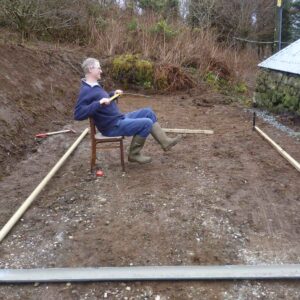
C: Imaginary shed. I love this pic! I wonder how many (or few) people plan their workspace this way? And did you build the shed around the loom?
A and R: We knew we wanted to build the workshop in that part of the croft, but in the end the loom arrived before the shed was delivered. It wasn’t planned that way, it’s just something we call ‘Skye time’ … So yes, we ended up building the shed around the loom.
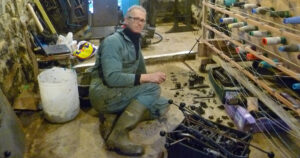
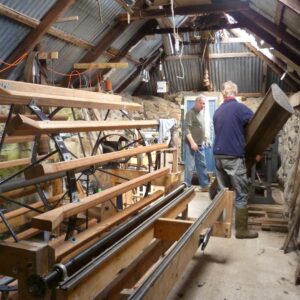
C: Do you have a background in engineering?

A and R: Neither of us has an official engineering background, but Roger used to work in organic farming so on a practical level he’s been improvising all his life to keep machinery going. And fortunately, we both like learning and fixing things.
C: From what breeds of sheep are you sourcing wool? Only from Skye?
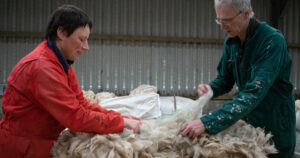
A and R: About half the yarn we use is from Skye sheep. The other half is stock range yarn from spinners in Scotland and the north of England. Our Skye wool yarn is mainly Cheviot hogg (hogg being a one-year-old sheep being shorn for the first time), but also brown and black wool (mostly Hebridean sheep, but also Black Cheviot and Zwartble). We blend those natural colours in different proportions to get shades ranging from white to grey and brown.
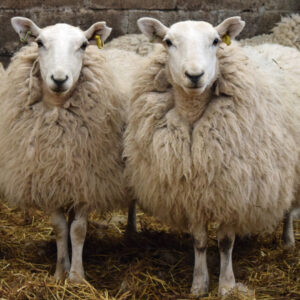
C: During the pandemic lockdown, it looks like you were sewing scrubs for the NHS. How did that come about?
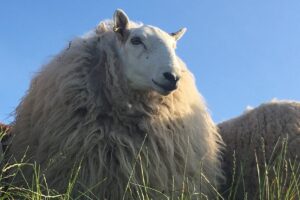
A and R: During the pandemic NHS staff had to change clothing all the time to avoid cross-contamination, which meant there was suddenly a big demand for scrubs. Locally they were particularly needed by care staff. Someone took the initiative to organise printing patterns and finding volunteers to sew the scrubs, so we were part of a whole group of people. Roger is normally terrified of the overlocker, but he got quite good at it in the end, working on our miniature production line.
C: I like the back story about the pointed twill connection to the Brodgar Stone. What other drafts do you use?
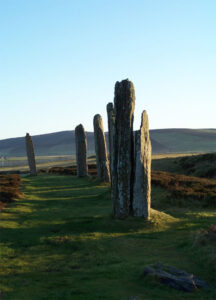
Courtesy Wikimedia Commons
A and R: Our looms were made for the Harris Tweed weavers, so the structures that work with the least trouble are 2/2 Twill and Herringbone. At the moment, we’re weaving a Bell Celtic, which has uneven numbers of heddles on different shafts. It’s not difficult, but just a bit more work to set up. We often weave 3/1 twills with various threadings.
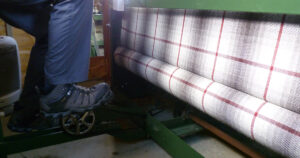
We have two looms: the original one bought second hand and the new one we bought in 2016. The second loom is made by the same textile machine manufacturers as the first and is basically the same machine but with one big difference: it’s got 8 frames (shafts) instead of the 4 on the second-hand loom. That gives us lots more possibilities. At the moment, we’re weaving a shadow weave design, but we’ve also done various Huck lace and other designs. The limitation is the pick repeat: the limit is 16 picks, i.e., after 16 weft threads the weave structure has to repeat itself. This is somewhat limiting, but we’ve adapted by packing the difficulty into the threading. One of our long-term projects is to adapt the loom to allow for a longer pick repeat.
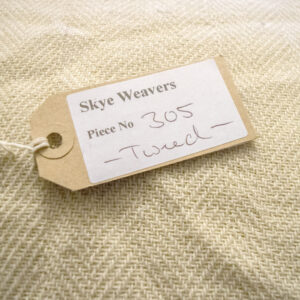
C: What inspirations do you take from the local landscape? Lichen? Flowers? Beaches?
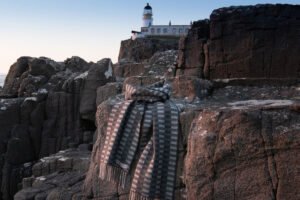
A and R: Our island environment is a constant source of inspiration. We are lucky to be surrounded by the most incredible landscapes which are constantly changing with the weather and seasons. I take a lot of photographs, particularly of nature in close-up, and these are often the starting point for a design. Sometimes it’s the colour combinations, or sometimes it’s the patterns and textures – particularly in the small details. Lichens, rock patterns and mosses are some of my favourite inspirations – they are fascinating in their infinite variations.
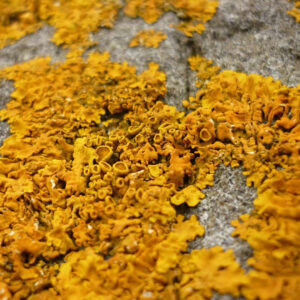
C: Visitors. Are visitors welcome? Specific days or times? Contact ahead?
A and R: Yes, visitors are welcome when we are open and there’s no need to book. During the visitor season we’re open 5 days a week, Tues – Sat, 10 – 5. It’s best to check on our website at
https://www.skyeweavers.co.uk/find to get the latest info. When you visit, we have a small shop to browse, and you can see the weavers at work.
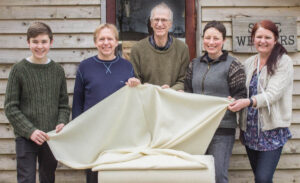
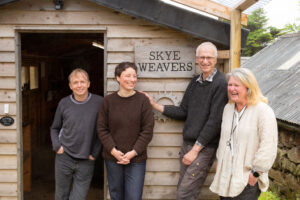
Learn more at https://www.skyeweavers.co.uk/our-blog